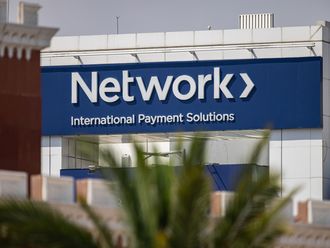Dubai: An improvement in liquidity in Saudi Arabia is expected to trigger a pick-up in lending from Saudi banks in 2018, according to Moody’s Investors service.
Since the oil price shock, deposit growth within Saudi banks has been sluggish, averaging 1 per cent since 2015 as compared to the 12 per cent average seen from 2011-14, according to Moody’s.
The decline was led by a decline in government balances amid a fiscal deficit stemming from lower oil prices and a contraction in deposits from the private sector because of government spending cuts, payment delays and weakening economic growth. Combined with increased government domestic borrowing, these developments tightened liquidity in the banking system.
However, in line with the spending increases planned in the government’s 2018 budget, “we expect that economic activity in Saudi Arabia will recover over the next 12-18 months. In particular, we expect that Saudi banks will benefit from the government’s private-sector stimulus of 72 billion Saudi riyals [Dh70.04 billion] to support private-sector growth over the next four years,” according to a note by Olivier Panis, vice-president and senior credit officer, and Jonathan Parrod, an associate analyst with Moody’s.
“As a result of improved liquidity, we believe banks are in a better position to absorb a pick-up in lending in 2018, which we expect will grow by around 4 per cent,” the analysts added.
The statistics showed that Saudi banks’ domestic liquid assets ended 2017 at a record high 457 billion riyals in December, despite subdued deposit growth and challenging business conditions, and such a condition is a credit positive, the ratings agency said.
Fiscal pressures
According to Arqaam analysis, Saudi banks are expected to show an earnings growth of more than 13 per cent in the fourth quarter of 2017, generating 5.5 per cent higher earnings for 2017.
As the cost of risk is better accrued during the year, banks have de-risked and liquidity in the system has improved. The fiscal pressures are also easing. The Saudi government has decided to follow an International Monetary Fund (IMF) recommendation to push back fiscal consolidation until 2023, instead of the initially planned 2020, in order to ease the strain on non-oil GDP growth.
Spending is expected to increase by 5.6 per cent in 2018, with the bulk coming from a 13.9 per cent increase in capital expenditure (capex) at 25 billion riyals, which should help to stimulate the economy.
Even the IMF expects higher GDP growth in Saudi Arabia, with the fund forecasting real GDP growth of 1.6 per cent for 2018, up from the 0.5 per cent it stated in its October 2017 forecast.










